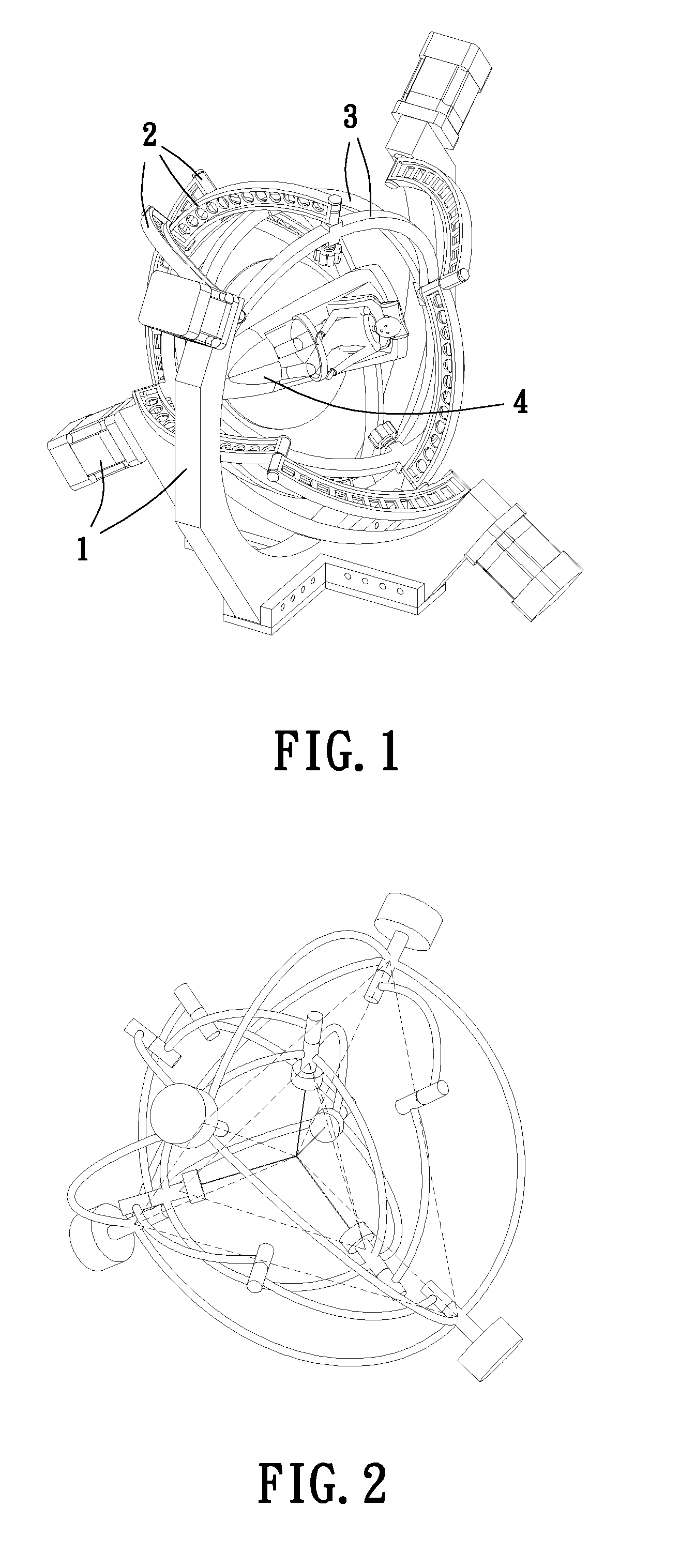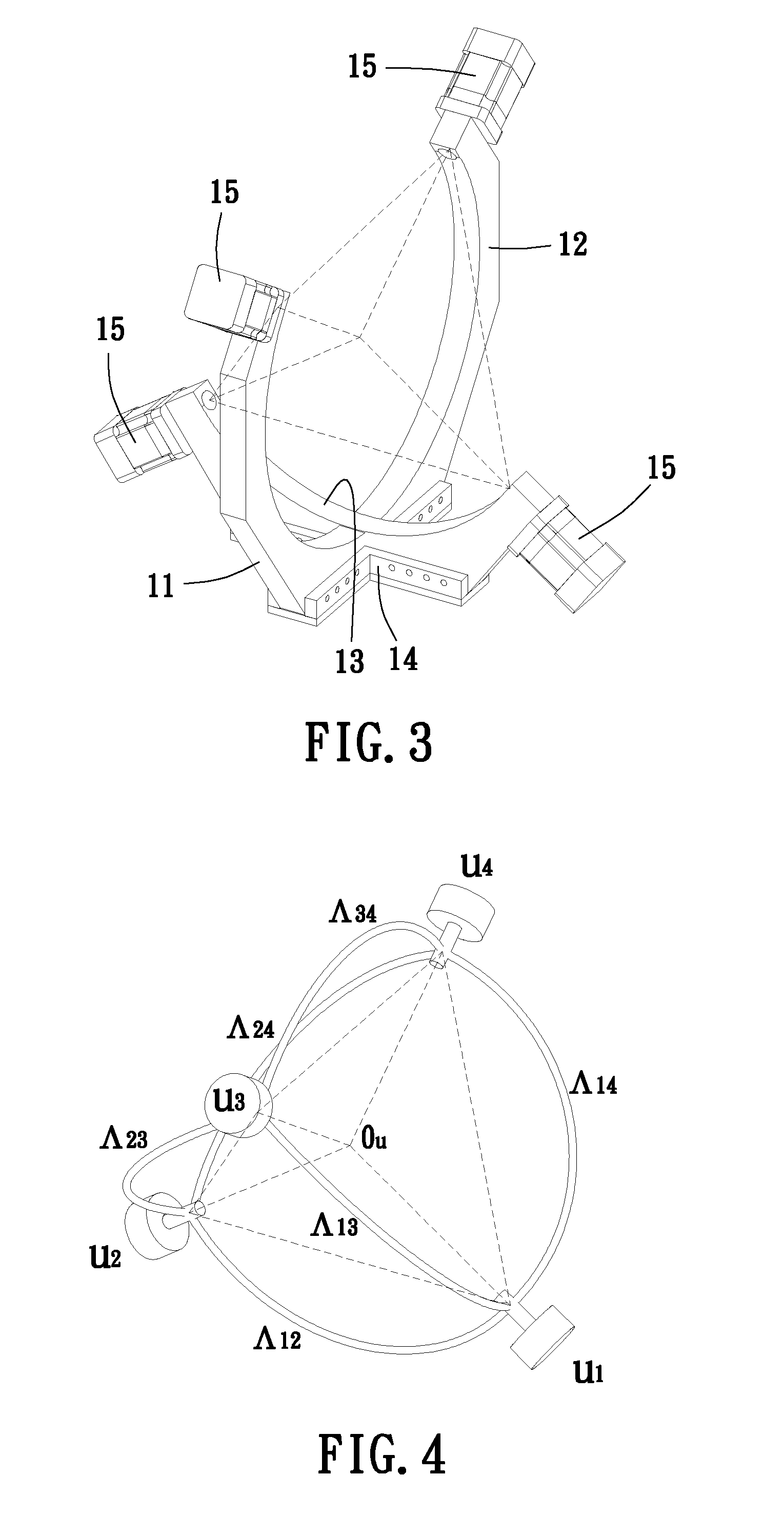Space orientating mechanism with two tetrahedrons and eight arc-links
a space orientation and arc-linking technology, applied in the field of kinematic linkage systems, can solve the problems of high confinement of the moving range of the payload bay, three angles, namely the roll angle, the pitch angle and the yaw angle, and the less useful stewart platform for simulating high-maneuvering motion
- Summary
- Abstract
- Description
- Claims
- Application Information
AI Technical Summary
Benefits of technology
Problems solved by technology
Method used
Image
Examples
Embodiment Construction
[0042]The mechanism of the present invention has the configuration as shown in FIG. 1, with the geometric definition as reflected in FIG. 2. For both of the structures, the features, geometric definitions and configurations of their components will be described separately for illustration.
[0043]The disclosed mechanism has an outer tetrahedron frame (hereinafter also referred to as the outer frame), on which the four motors are fixedly mounted. The torque output devices shafted on the outer tetrahedron frame can be electric motors, hydraulic actuator or pneumatic actuator, but motors are advantageous for being easy to operate and maintain, hereinafter the torque output devices are collectively referred to as the motors. The outer frame may be composed of a left arc-bracket 11, a right arc-bracket 12, a lower arc-bracket 13, a cross bracket 14 and four motors 15, as shown in FIG. 3.
[0044]The outer tetrahedron frame has such a geometric definition that the four vertexes of the outer te...
PUM
 Login to View More
Login to View More Abstract
Description
Claims
Application Information
 Login to View More
Login to View More - R&D
- Intellectual Property
- Life Sciences
- Materials
- Tech Scout
- Unparalleled Data Quality
- Higher Quality Content
- 60% Fewer Hallucinations
Browse by: Latest US Patents, China's latest patents, Technical Efficacy Thesaurus, Application Domain, Technology Topic, Popular Technical Reports.
© 2025 PatSnap. All rights reserved.Legal|Privacy policy|Modern Slavery Act Transparency Statement|Sitemap|About US| Contact US: help@patsnap.com



